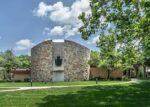In the midst of the pandemic, a wonderful gift was presented to me. My synagogue lost its Executive Director and I volunteered to help in the interim. This offer was not singular in nature; several individuals stepped up, and leant their time, talents, and energies to securing our community. During a moment in time when the world essentially was put on pause, I had a purpose and sufficient opportunity to do what I love the most – problem solve and resolve.

A consistent issue throughout the time volunteering in the revision of the strategic plan and then moving on to facility needs was a fundamental difference in our membership. Like all not-for-profit organizations throughout the decade, we have experienced a dwindling number of lay volunteers and leadership. Many have named this the commonization of our religious life. My parents’ social life was grounded by Jewish community organizations. My generation grew up assuming synagogue membership was a given in our lives. Attendance and engagement may wax and wane; but membership was a given.
The idea of membership has changed. A consistent message is “What do I get for this?” If a parent has a child needing religious school, they understand paying for that. Paying for membership is another story. The pandemic’s forced shift to as virtual world has exacerbated these messages. In a world where you can log on to any program, worship service, or more from a place anywhere in the world, the idea of a fixed membership is questioned. When we can go back to being together, what will the lasting impact of virtual Judaism be?

The theme of our congregation, established by Rabbi Maurice Davis (z”l) in the 1950’s, is “Kedoshim ti’hiyu” — You shall be holy. (Leviticus 19:2). These words are emblazoned on the façade of our building and carried through to artwork inspired by Mordechai Rosenstein on the ark doors. It has welcomed me to synagogue from Religious School to the present day. It has inspired my volunteer work within the synagogue and community.
The notion of holiness presupposes a set of values shared within a community. It’s these values which create bonds among people that forge them into a community. The task of being holy isn’t easy. It is not something we can be even numbered weeks any more than a task we can achieve alone. To be holy is not a singular act. It is a rubric of beliefs, actions, interpretations, and platforms from which we live our daily lives.
Kedoshim ti’hiyu is not an object we can go into a synagogue to purchase in the same way we go to Target to purchase clothing. Another depiction of this theme is found in three artistic renderings of the word kadosh – holy. One is made of wood, one stone, and one clay. We see holiness, we live holiness, all around. If you and I are practicing holiness, it will create a shared set of experiences, rules guiding our behavior, and targets we will collectively work toward.
Engagement in Kedoshim ti’hiyu belies the definition of a commodity. As we face this post-pandemic Jewish world, leaderships’ choice is succumbing and recreate our centuries old culture as a series of purchasable, disjointed objects or to accept the challenge to be holy. As we begin to reopen our sacred places and venture back out to be together, we have the opportunity to redefine and reestablish what it means to be holy.
Leave a Reply